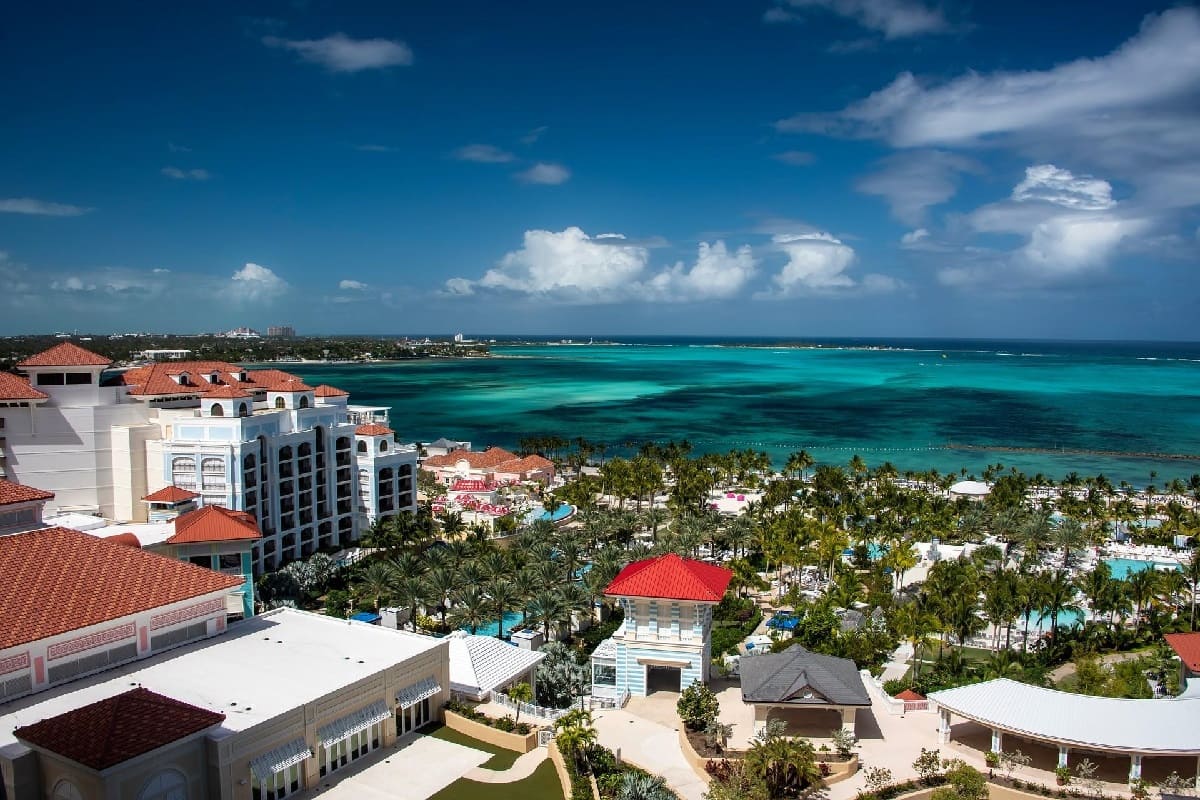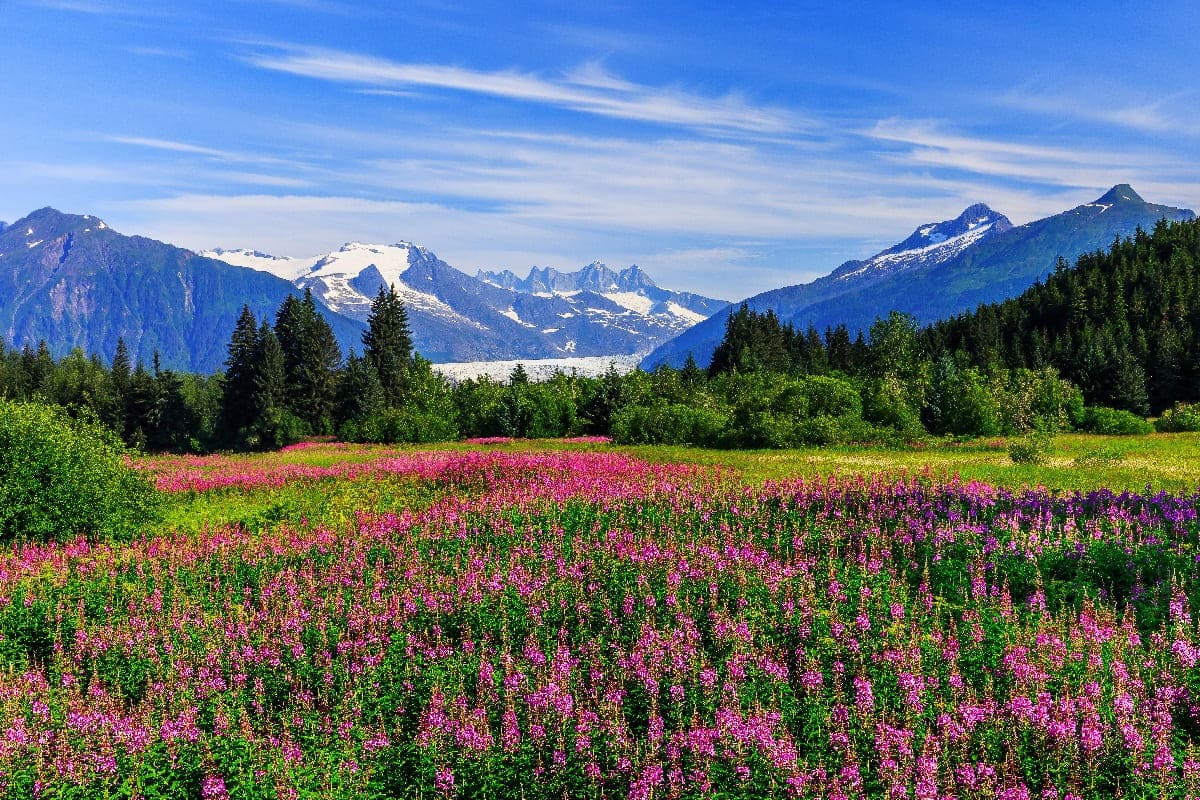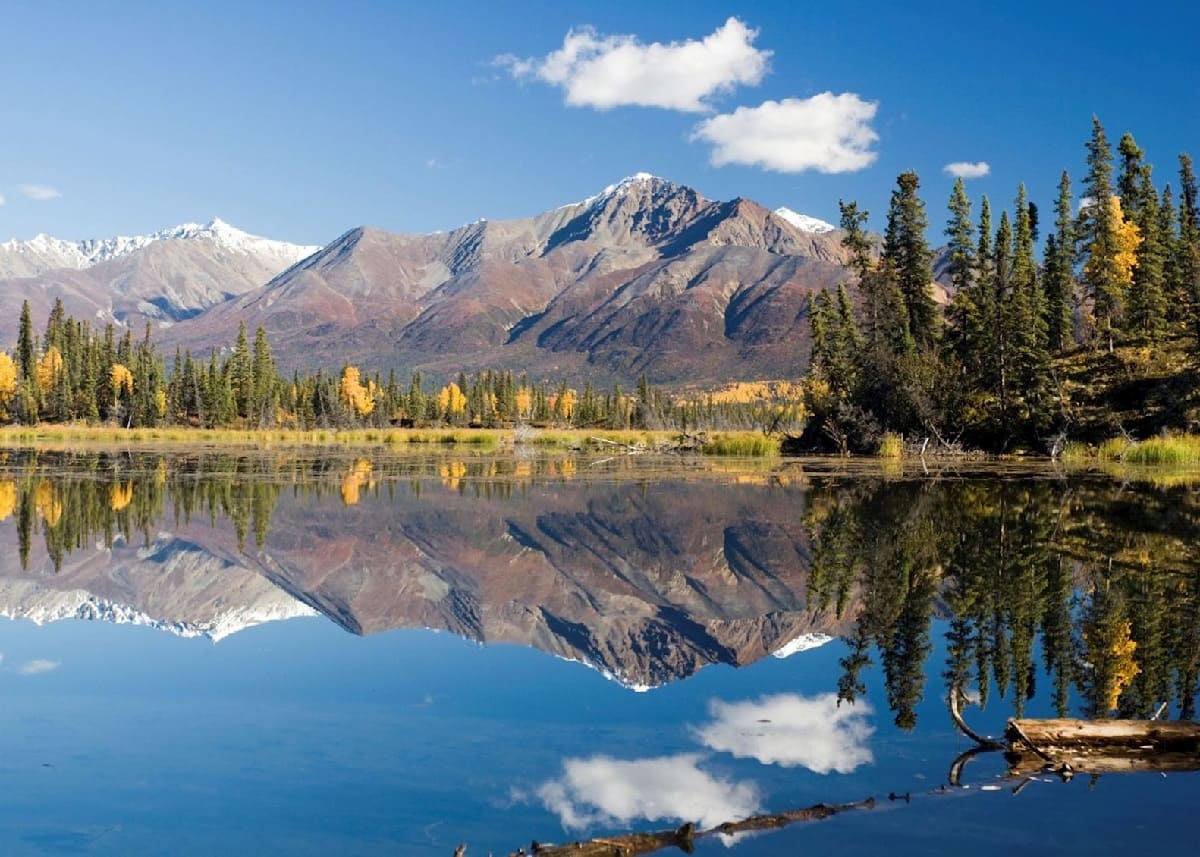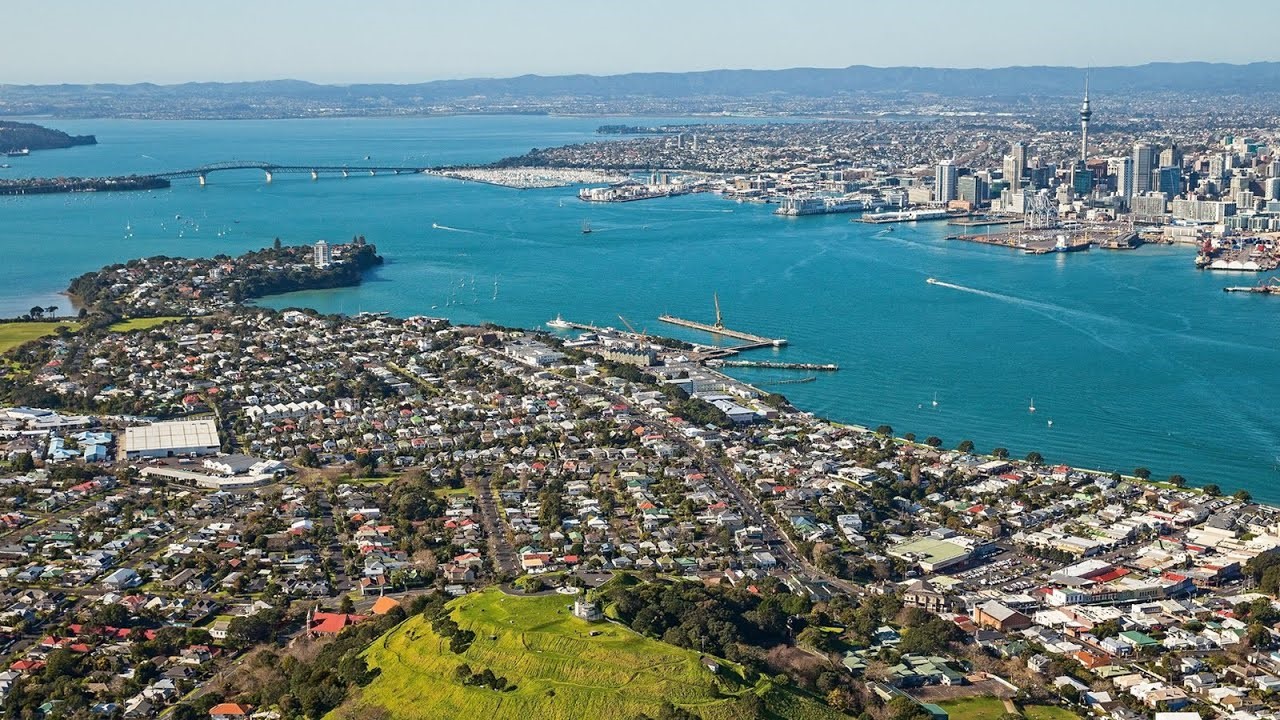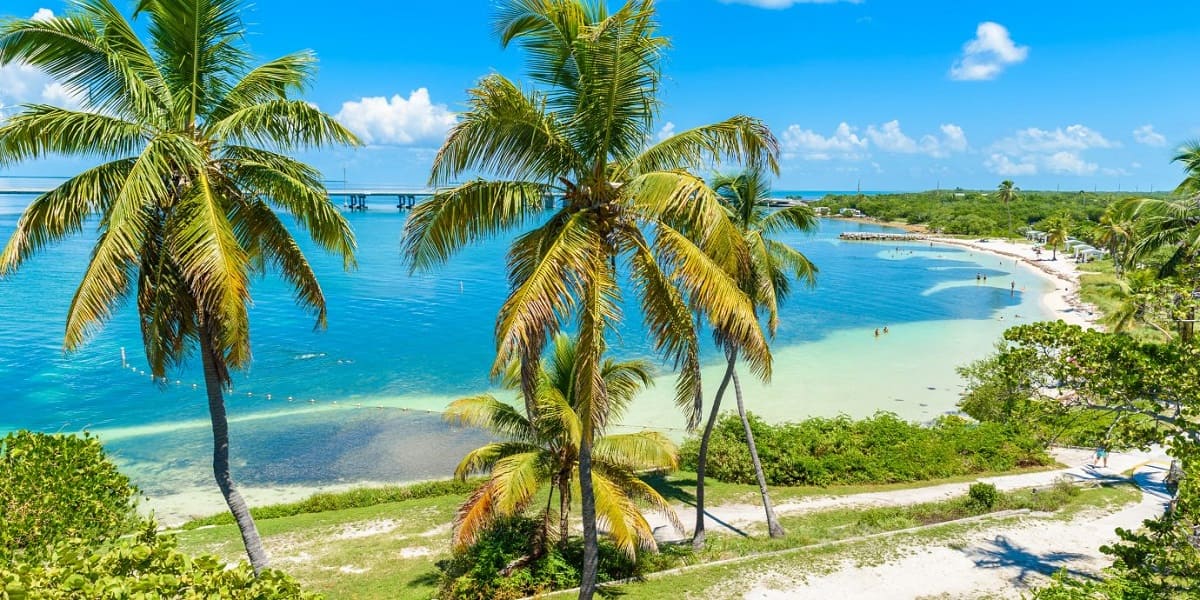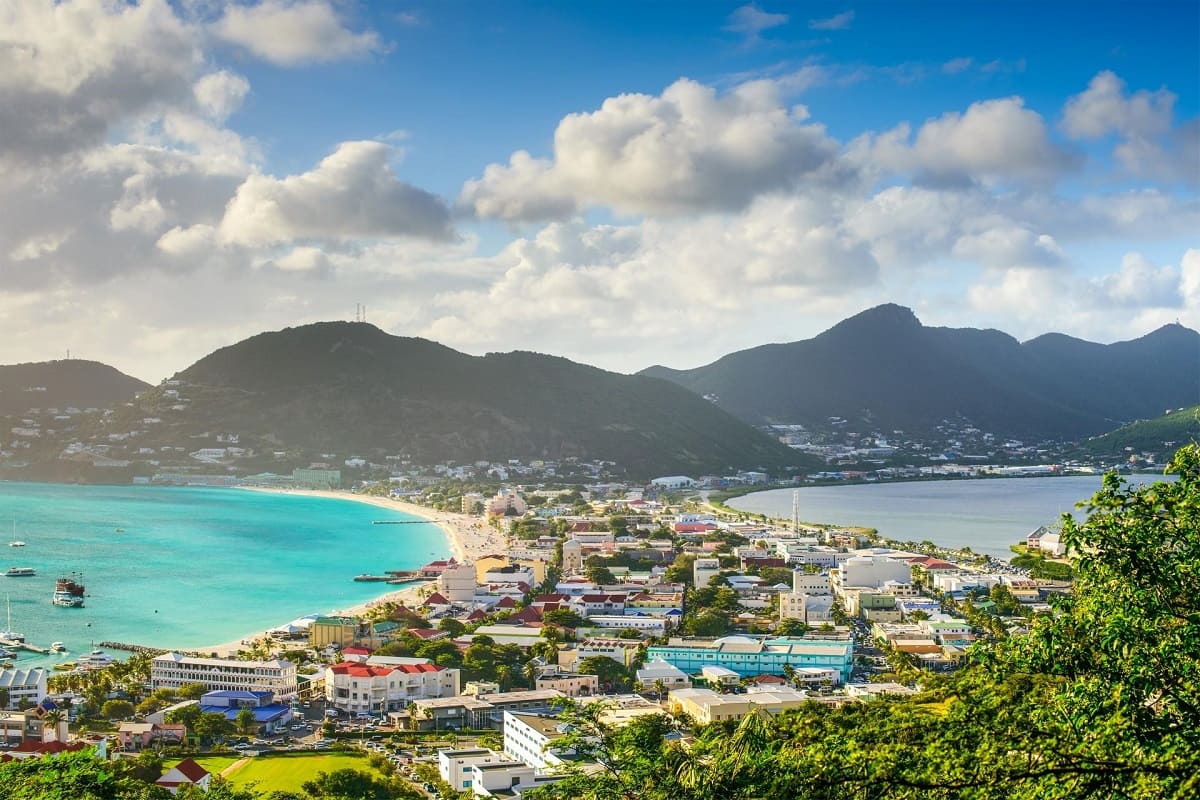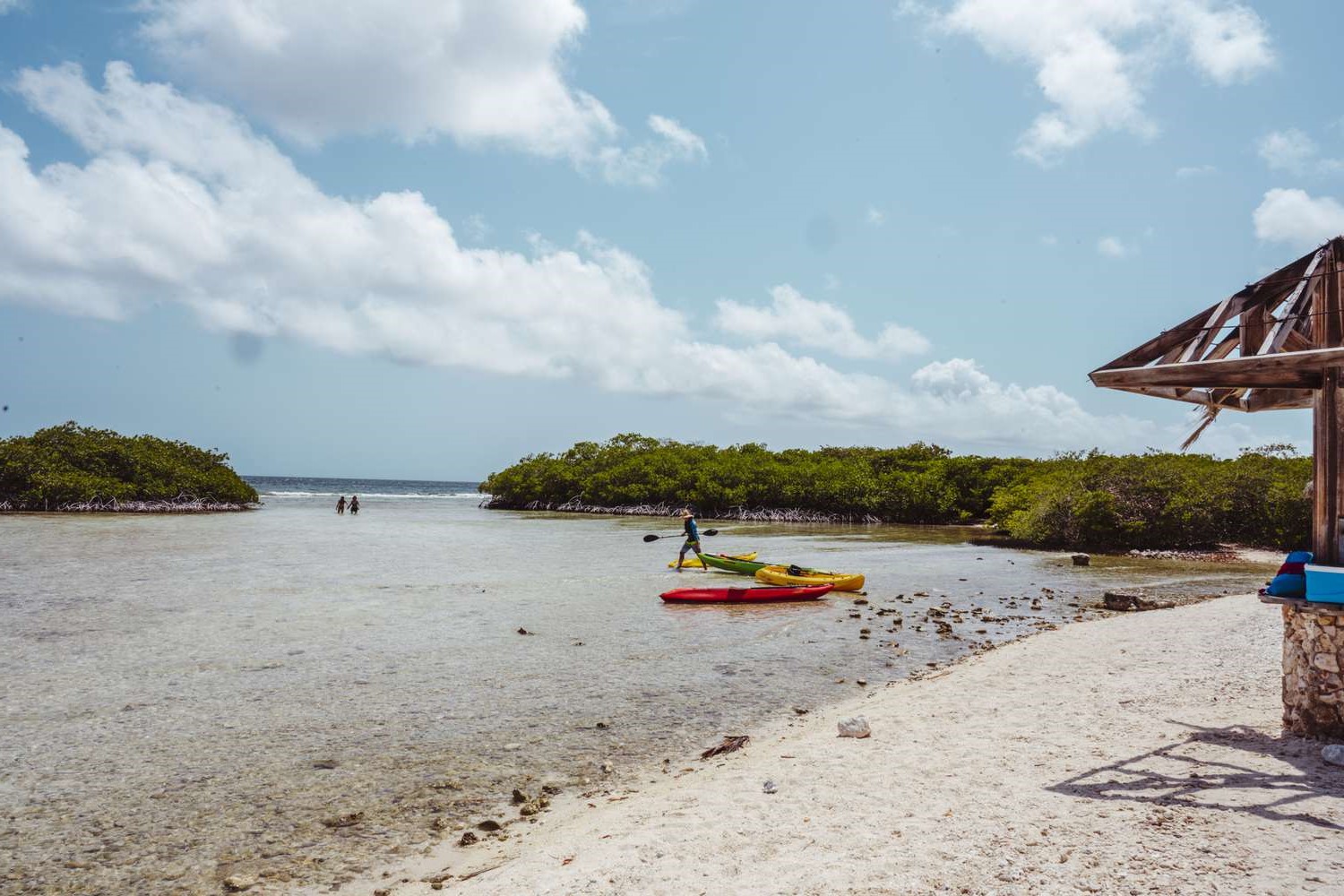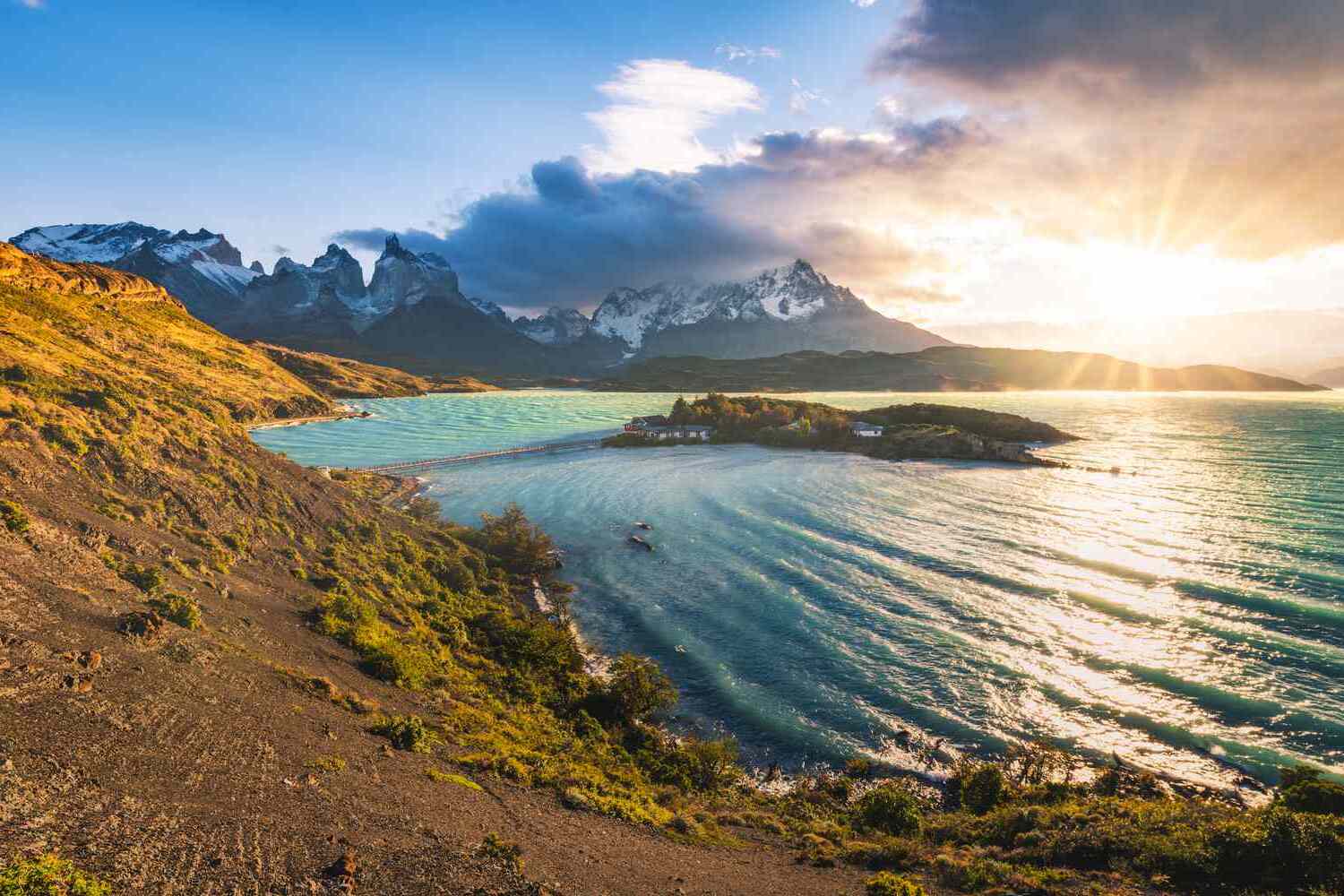Home>Weather and Climate>Greenland Climate: A Comprehensive Guide To Weather Patterns And Conditions In Greenland
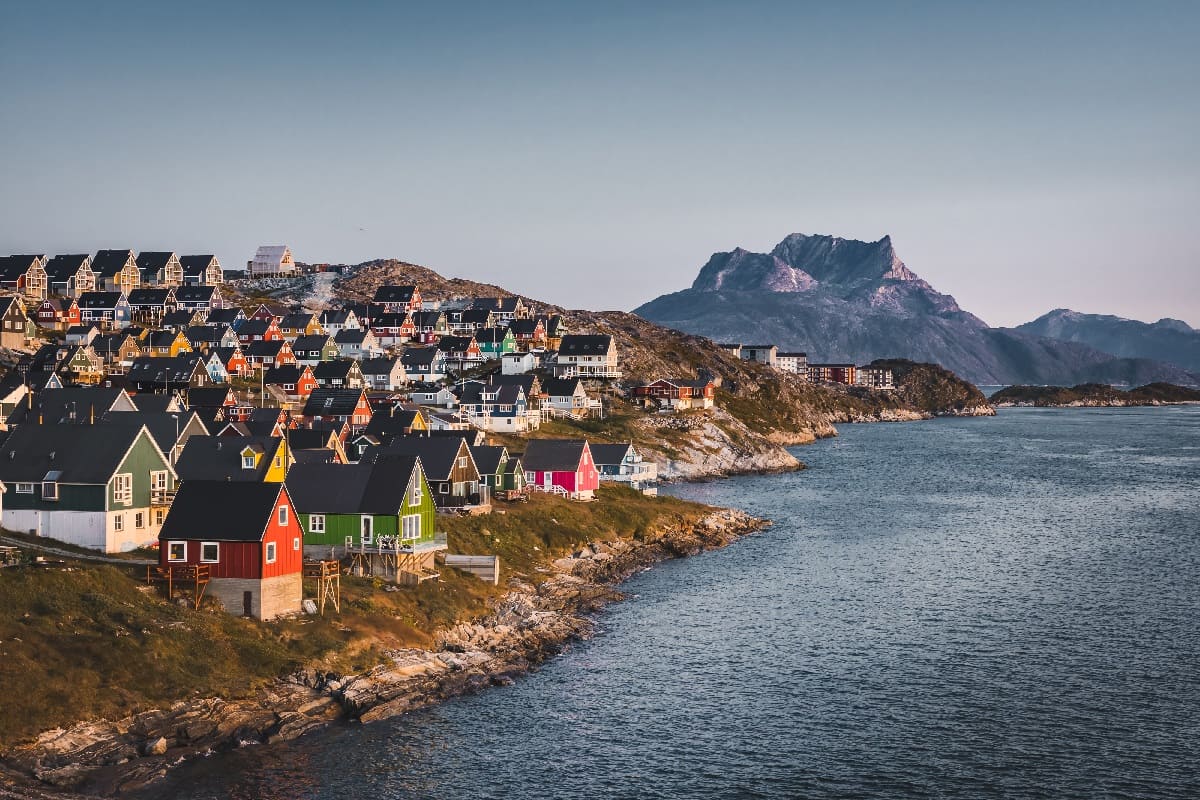

Weather and Climate
Greenland Climate: A Comprehensive Guide To Weather Patterns And Conditions In Greenland
Published: March 2, 2024
Discover the diverse weather patterns and conditions in Greenland with our comprehensive guide. Learn about the climate, temperature, and seasonal variations. Gain insights into the unique weather experiences in Greenland.
(Many of the links in this article redirect to a specific reviewed product. Your purchase of these products through affiliate links helps to generate commission for Temperatures.com, at no extra cost. Learn more)
Table of Contents
Introduction
Greenland, the world's largest island, is renowned for its stunning natural beauty and unique climate. Situated between the Arctic and Atlantic Oceans, Greenland's weather patterns and conditions are influenced by its vast ice sheet, rugged terrain, and proximity to the North Pole. Understanding the climate of Greenland is essential for appreciating its environmental significance and the challenges it faces due to climate change.
The climate of Greenland is a fascinating subject that encompasses a wide range of weather phenomena, from the majestic Northern Lights to the powerful polar vortex. Exploring the diverse climate zones and weather patterns in Greenland provides valuable insights into the island's ecological diversity and the ways in which its inhabitants adapt to the ever-changing conditions.
In this comprehensive guide, we will delve into the geography of Greenland, examine its distinct climate zones, analyze the prevailing weather patterns and conditions, and discuss the impact of climate change on this remarkable island. Additionally, we will explore the strategies employed by the people of Greenland to adapt to and mitigate the effects of a changing climate, showcasing their resilience in the face of environmental challenges.
Join us on a captivating journey through the captivating world of Greenland's climate, where the interplay of natural forces shapes the landscape and influences the lives of those who call this extraordinary island home.
Geography of Greenland
Greenland, located in the North Atlantic Ocean, is a land of superlatives. It is the world's largest island, covering an area of over 2.1 million square kilometers. Despite its name, much of Greenland is covered by a massive ice sheet, which extends over 1.7 million square kilometers and contains about 10% of the world's freshwater reserves. This ice sheet, up to 3 kilometers thick in some areas, has a profound impact on the island's geography and climate.
The coastline of Greenland is characterized by deep fjords, towering cliffs, and numerous small islands. The interior is dominated by the Greenland Ice Sheet, which has sculpted the landscape over millions of years, creating vast valleys, imposing mountains, and glaciers that flow towards the sea. The highest point on the island is the summit of Gunnbjørn Fjeld, reaching an elevation of 3,694 meters.
Greenland's geography is also shaped by its position within the Arctic region. The island straddles the Arctic Circle, resulting in long, harsh winters and relatively cool summers. The surrounding waters, including the Greenland Sea and the Labrador Sea, play a crucial role in regulating the island's climate and supporting diverse marine life.
The island's unique geography has significant implications for its inhabitants and the environment. The ice sheet, glaciers, and permafrost influence local ecosystems, freshwater availability, and the stability of coastal regions. Furthermore, the geography of Greenland contributes to its status as a barometer of global climate change, with the island experiencing some of the most pronounced effects of rising temperatures and melting ice.
Overall, the geography of Greenland is a testament to the power of natural forces in shaping the planet's landscapes. From the immense ice sheet to the dramatic coastal features, this island's geography is a source of wonder and a key factor in understanding its climate and environmental dynamics.
Climate Zones in Greenland
Greenland's vast expanse encompasses a diverse array of climate zones, each contributing to the island's rich environmental tapestry. The unique geography and position of Greenland give rise to distinct climatic regions, each characterized by specific weather patterns and conditions. Understanding these climate zones is essential for appreciating the island's ecological complexity and the challenges posed by a changing climate.
-
Arctic Desert Climate: The northern and eastern parts of Greenland are classified as having an Arctic desert climate. Here, the landscape is dominated by the expansive Greenland Ice Sheet, which exerts a profound influence on the local climate. This region experiences extremely cold temperatures, with long, harsh winters and brief, cool summers. Precipitation is minimal, and the terrain is characterized by vast stretches of ice and snow, punctuated by rugged mountain ranges and glaciers.
-
Tundra Climate: Moving southward, Greenland transitions into a tundra climate zone, encompassing much of the western and southern coastal areas. In this region, the climate is milder than in the Arctic desert, with cool summers and cold winters. The tundra landscape supports hardy vegetation, including mosses, lichens, and low-lying shrubs, while also providing habitat for various species of wildlife, such as musk oxen, Arctic hares, and migratory birds.
-
Maritime Climate: Along the southern and southwestern coasts, Greenland experiences a maritime climate influenced by the adjacent waters of the Atlantic Ocean. This region benefits from relatively milder temperatures compared to the rest of the island, with cool summers and relatively mild winters. The maritime climate fosters a more diverse range of vegetation, including grasses, sedges, and flowering plants, and supports a variety of marine life in the adjacent waters.
-
Polar Climate: In the far north, Greenland transitions into a polar climate zone, characterized by frigid temperatures, icy conditions, and a stark, windswept landscape. This region experiences prolonged periods of darkness in winter and extended daylight in summer, shaping the behavior of both the environment and its inhabitants.
These distinct climate zones collectively contribute to the ecological richness of Greenland, supporting a wide range of flora and fauna adapted to the island's challenging conditions. The interplay of these climate zones also underscores the island's vulnerability to climate change, as shifts in temperature and precipitation patterns can have far-reaching impacts on its delicate ecosystems and the livelihoods of its inhabitants. Understanding the nuances of these climate zones is crucial for comprehending the broader environmental dynamics at play in Greenland.
Weather Patterns and Conditions
Greenland's weather patterns and conditions are as diverse as its landscape, reflecting the island's unique position at the confluence of Arctic and Atlantic influences. The interplay of atmospheric dynamics, ocean currents, and the presence of the massive ice sheet gives rise to a wide range of weather phenomena that shape life on the island.
Winter
During the winter months, Greenland experiences extreme cold, particularly in the northern and eastern regions characterized by an Arctic desert climate. Temperatures can plummet well below freezing, with the long polar nights casting the land into a serene, icy stillness. Blizzards and strong winds are common, creating challenging conditions for both residents and wildlife. In the southern and western coastal areas, the maritime climate moderates winter temperatures to some extent, but the season remains a time of cold and darkness.
Summer
In contrast, Greenland's summers bring a temporary transformation to the landscape. The extended daylight hours and milder temperatures allow the tundra and maritime regions to burst into life, with vibrant vegetation carpeting the terrain and wildlife thriving in the brief but bountiful season. However, even in the warmest months, the influence of the ice sheet is palpable, as glaciers continue their slow, inexorable march towards the sea, shaping the coastal environment and contributing to the ebb and flow of ocean currents.
Precipitation
Precipitation in Greenland varies widely across the island. The Arctic desert regions receive minimal rainfall, with much of the moisture locked in the form of snow and ice. In the tundra and maritime zones, precipitation is more prevalent, sustaining the diverse ecosystems that have adapted to the island's challenging climate. Melting ice and snow contribute to the flow of rivers and the formation of lakes, supporting a delicate hydrological balance that is essential for the island's flora and fauna.
Wind and Storms
Wind plays a significant role in shaping Greenland's weather patterns, particularly during the winter months when powerful storms can sweep across the island, bringing blizzards and whiteout conditions. The interaction between cold Arctic air and milder maritime air can give rise to intense weather systems, creating a dynamic and ever-changing atmospheric environment. These winds also influence the movement of sea ice and the behavior of marine species, underscoring the interconnectedness of Greenland's weather and its surrounding ecosystems.
Climate Variability
Greenland's climate exhibits notable variability, with year-to-year fluctuations in temperature, precipitation, and ice cover. This variability poses challenges for residents and wildlife, requiring adaptation and resilience in the face of unpredictable conditions. Moreover, the impact of climate change is increasingly evident in Greenland, with rising temperatures leading to accelerated ice melt, changes in precipitation patterns, and shifts in the distribution of plant and animal species.
In summary, Greenland's weather patterns and conditions are a testament to the island's environmental complexity and the intricate interplay of natural forces. From the frigid stillness of winter to the fleeting vibrancy of summer, the island's climate shapes its ecosystems and the lives of those who call it home. Understanding these weather patterns and conditions is essential for appreciating the resilience of Greenland's inhabitants and the ongoing challenges posed by a changing climate.
Impact of Climate Change
Climate change has exerted profound and far-reaching effects on Greenland, reshaping its environment and posing significant challenges to its inhabitants. The island, with its immense ice sheet and delicate ecosystems, serves as a barometer of global climate change, bearing witness to the rapid transformations occurring in the Arctic region.
One of the most visible impacts of climate change in Greenland is the accelerated melting of its ice sheet. Rising temperatures have led to increased rates of ice loss, contributing to rising sea levels and altering the island's physical landscape. Glaciers that have stood for millennia are retreating at an unprecedented pace, releasing vast quantities of freshwater into the surrounding oceans. This influx of freshwater can disrupt ocean currents and marine ecosystems, with potential implications for global climate patterns.
The effects of ice melt are not confined to the physical environment; they also have profound socio-economic implications for Greenland's communities. Coastal erosion, driven in part by the retreat of sea ice and the loss of protective ice shelves, threatens infrastructure and traditional livelihoods. Furthermore, the release of freshwater from melting ice can impact fisheries and marine biodiversity, affecting the livelihoods of those who depend on the ocean for sustenance and economic well-being.
In addition to ice melt, climate change is altering the distribution and behavior of plant and animal species in Greenland. Warmer temperatures are enabling the northward expansion of certain vegetation and the arrival of new species, potentially disrupting established ecological relationships. For indigenous communities reliant on traditional hunting and gathering practices, these changes can have profound cultural and subsistence implications, necessitating adaptation strategies to maintain their way of life in the face of environmental flux.
Furthermore, the impact of climate change extends beyond the physical and biological realms, influencing the mental and emotional well-being of Greenland's residents. The rapid transformations occurring in the natural environment, including shifts in weather patterns and the loss of familiar landscapes, can contribute to feelings of uncertainty and loss. Indigenous knowledge and cultural traditions, deeply intertwined with the land and its rhythms, are also affected by these changes, underscoring the interconnectedness of environmental and human well-being.
In summary, the impact of climate change on Greenland is multifaceted, encompassing physical, ecological, socio-economic, and cultural dimensions. The island's resilience in the face of these challenges is a testament to the strength and adaptability of its inhabitants. By understanding the profound impact of climate change on Greenland, we can gain valuable insights into the broader implications of environmental transformation and the urgent need for global action to mitigate its effects.
Adaptation and Resilience
In the face of profound environmental changes driven by climate change, the people of Greenland have demonstrated remarkable resilience and adaptability, drawing upon traditional knowledge, innovation, and community collaboration to navigate the evolving landscape.
Adaptation strategies in Greenland encompass a wide range of initiatives aimed at mitigating the impacts of climate change and preserving the island's unique ecosystems. Indigenous communities, deeply connected to the land and its resources, have leveraged traditional knowledge and practices to sustain their way of life in the midst of environmental flux. From adapting hunting and fishing techniques to accommodate shifting migration patterns of wildlife to preserving traditional food preservation methods in the face of altered seasonal rhythms, indigenous communities have shown a deep understanding of the interconnectedness between human well-being and the natural environment.
In addition to drawing upon traditional wisdom, Greenland has embraced innovative approaches to adaptation, leveraging technology and scientific expertise to address the challenges posed by a changing climate. This includes the development of sustainable energy solutions to reduce reliance on fossil fuels, the implementation of coastal protection measures to mitigate the impact of erosion, and the promotion of climate-resilient agriculture and aquaculture practices. Furthermore, ongoing research and monitoring efforts have provided valuable insights into the dynamics of environmental change, informing adaptive strategies and enhancing the island's capacity to respond to emerging challenges.
Community resilience plays a central role in Greenland's adaptation efforts, with collaborative initiatives fostering a sense of solidarity and shared responsibility in addressing environmental challenges. Local and regional authorities, in partnership with indigenous organizations and scientific institutions, have worked to develop comprehensive adaptation plans that prioritize community well-being, environmental sustainability, and cultural preservation. These initiatives encompass education and awareness programs, capacity-building efforts, and the promotion of sustainable livelihoods, empowering communities to actively participate in shaping their future in the face of environmental uncertainty.
The resilience of Greenland's inhabitants, rooted in a deep connection to the land and a spirit of collective stewardship, serves as a source of inspiration and insight in the global discourse on climate adaptation. By embracing a holistic approach that integrates traditional knowledge, innovation, and community engagement, Greenland exemplifies the power of human resilience in the face of environmental change. The island's journey towards adaptation and resilience offers valuable lessons for fostering sustainable coexistence with the natural world and underscores the imperative of collective action in addressing the complex challenges posed by a changing climate.
Conclusion
In conclusion, the climate of Greenland is a captivating tapestry woven from the interplay of natural forces, geographical features, and human resilience. From the expansive ice sheet to the rugged coastal fjords, Greenland's environment reflects the intricate balance of ecological diversity and climatic extremes. The island's distinct climate zones, encompassing Arctic desert, tundra, maritime, and polar climates, underscore the richness and fragility of its ecosystems. The weather patterns and conditions, characterized by extreme cold, variable precipitation, and dynamic wind patterns, shape the lives of both wildlife and human inhabitants.
However, the impact of climate change looms large over Greenland, presenting formidable challenges to its environment and communities. The accelerated melting of the ice sheet, coastal erosion, shifts in biodiversity, and socio-economic implications underscore the urgent need for adaptation and resilience. Yet, amidst these challenges, the people of Greenland have demonstrated remarkable strength and adaptability, drawing upon traditional knowledge, innovation, and community collaboration to navigate the evolving landscape.
The journey of adaptation and resilience in Greenland serves as a beacon of hope and inspiration, offering valuable insights into the interconnectedness of human well-being and the natural environment. By embracing a holistic approach that integrates traditional wisdom, innovation, and community engagement, Greenland exemplifies the power of human resilience in the face of environmental change. The island's experience underscores the imperative of collective action in addressing the complex challenges posed by a changing climate and offers valuable lessons for fostering sustainable coexistence with the natural world.
As Greenland continues to navigate the profound transformations driven by climate change, its story serves as a testament to the enduring spirit of resilience and the capacity for positive change in the face of adversity. By understanding and honoring the intricate dynamics of Greenland's climate and the resilience of its inhabitants, we can glean valuable lessons for fostering a harmonious relationship with the environment and working towards a sustainable future for generations to come.

